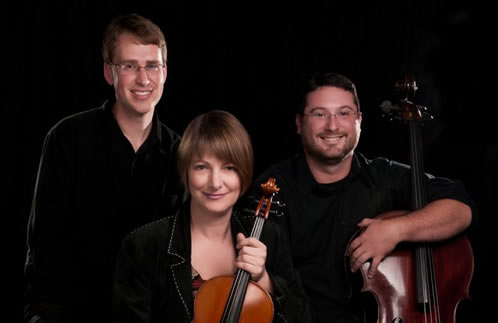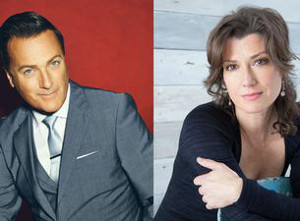This preview has been provided by Mallarmé Chamber Players.
Peace, War and Peace
Mallarmé Chamber Players
September 10, 2017 at 3:00 pm
Private home in Chapel Hill
Program notes by Florence Nash
Sergei Taneyev: Piano Quartet in E Major, Op. 20 (1906)
In Russian concert halls, you’ll see Taneyev’s (1856-1915) bust right up there beside Mozart, Beethoven, Tchaikovsky, et al. He’s considered one of the greats from Russia’s 19th-20th C. musical Golden Age. If his compositions have been surprisingly little known outside that country, perhaps it’s because much of his fame rests on his brilliance as a teacher. Enrolled by his arts-patron parents at the Moscow Conservatory at the tender age of 10, Taneyev studied composition with Tchaikovsky and piano with Rubinstein. In time, he became a Conservatory professor himself, numbering among his many students Glière, Rachmaninov, and Scriabin. As well as Tchaikovsky’s influence, Taneyev also reveals his fascination with Renaissance polyphony and Bach counterpoint; he eventually considered Mozart his chief model. Which is to say, his music contains both abundant romanticism and sophisticated structural intricacy (One reviewer called him “the Russian Brahms.”), all well displayed in this majestic quartet.
Op. 20 is a huge work. A brief, emphatic piano introduction opens the allegro brillante first movement, which is quickly enlarged by strings into almost orchestral dimensions — more like a concerto or symphony. The movement progresses in a flamboyant but controlled succession of themes, then concludes with a rousing coda. The adagio that follows may be where Tchaikovsky’s influence can be most plainly heard. This (relatively!) short movement is swept with melody, melancholy, tenderness and grandeur, pierced by a rather agitated central section which notably reinforces the poignancy of its surroundings. To conclude, the allegro molto is a glittering showcase of Taneyev’s mastery of counterpoint. This densely-woven texture of fugue and canon seems to swell beyond piano quartet dimensions, but the composer’s complete control of his medium is never in doubt.
Dmitri Shostakovich: Cello Sonata in D Minor, Op. 40 (1934)
“Shostakovich represents the culmination of 20th-century Russian music, but, unlike [Stravinsky and Prokofiev], he is alone in having composed his entire oeuvre within the framework of Soviet aesthetics . . . [T]hrough the strength of his genius he overcame the limitations of socialist realism to the point where it no longer inhibited free musical creation, in the battle for which it was Shostakovich who ultimately emerged victorious.” [New Grove] The image of Shostakovich (1906-1975) as a musical propagandist for the Soviet state is unjust; he genuinely believed in the artist’s obligation to represent the society that produced him. By this measure he conducted his career with integrity, though with considerable difficulty under the iron fist of Tikhon Khrennikov, long-reigning Stalinist head of the Union of Soviet Composers, who denounced Shostakovich’s music as full of “neuroticism, escapism, and repulsive pathology.” Notwithstanding the constant obstructionism, Shostakovich managed to produce an impressive volume and variety of important music, full of passion, poignancy, and humor.
This cello sonata emerged from a time of both inner and outer turmoil for the composer. The Stalinist purges were beginning, Krennikov was poised to censure his embattled opera Lady Macbeth of Mtsensk as bourgeois and decadent, and, what’s more, Shostakovich’s marriage was (temporarily) falling apart. Perhaps we hear this in the wit edged with bitterness and the melancholy permeating his characteristic tonal shape-shifting and driving rhythms. In the opening allegro non troppo, piano and cello swap themes and moods; then, in an unusual pianissimo recapitulation, the piano flings staccato chords against a slow, sustained cello. After the driving perpetual-motion energy of the second movement, the soulful largo evokes a bleak Russian landscape against which the cello sings. The final movement is a sort of brief rondo, with three iterations of the playful main theme interspersed by energetic displays from both instruments, most notably a “helter-skelter cadenza” by the piano.
Sofia Gubaidulina (b. 1931): String Trio (1988), I.
Almost unknown outside Russia until she was in her fifties Sofia Gubaidulina (b. 1931) has in the last thirty years become widely acclaimed for her individualistic, experimental compositions. From early struggles as a member of the “Khrennikov Seven,” a post-Shostakovich cohort of composers whose music was denounced by the powerful head of the Composers Union for its “pointlessness . . . and noisy mud,” she has gone on to garner many international awards and honorary doctorates (most recently from the New England Conservatory, in February 2017). Asked in an interview to contrast her experience as a composer under Brezhnev with that of earlier Soviet composers, she noted that Shostakovich “withdrew works rather than face jail under Stalin. He had to compromise . . . in response to what he was obliged to call ‘just criticism’.” To the question, “What would you have done in his shoes?” she replied, “Withdraw the music! Who wants to go to jail! I was freer than [Shostakovich] or Prokofiev. They suffered so much from politics. We didn’t. It wasn’t life or death for us.”
Gubaidulina has expressed devotion to the music of both Bach and Webern, but she clearly had the latter more in mind in this first movement of her String Trio. The movement also reveals elements of her preoccupation with transcendence and mystical spiritualism, which she sought to express musically through the use of various numerical systems such as 12-tone and Fibonacci serialism. The movement opens with a spare, tentative conversation among the strings, their voices like flung droplets. Together they spar and frolic, then the music’s texture gradually darkens and thickens toward an intense climax, perhaps a hymn of urgent supplication. In this compact but vividly contrasting movement she incorporates striking sound contrasts, through rubato, pizzicato, vibrato, and bouncing col legno passages.
Rodion Shchedrin (b. 1932) Three Funny Pieces for Piano Trio (1997)
If you Google images of Rodion Shchedrin (b. 1932), you’ll find his broad grin everywhere, or, at the very least, a twinkle in his eye. He’s full of humor, as Shostakovich was — he subtitled his first Concerto “Naughty Limericks” — but his humor, like Shostakovich’s, can turn a bit dark. For 40 years, after all, he composed in the Soviet Union. Following studies at the Moscow Choral School and Moscow Conservatory, he came of age as a composer in “a rather lean time,” as he wryly noted. “For 35 years, there was a dictatorship of the avant-garde,” Shchedrin said, “[but] I was never a part of it.” Only 20 when Stalin died, he escaped the state’s most severe repression of artists; still, in his early years, he turned out a good deal of abstract music, as was the rule of the day. But, he says, he regards it as a mortal sin to be boring, insisting that “music should touch the heart and soul.” So it is primarily as a self-styled “post-avant-garde composer” that he has produced an eminently listenable oeuvre including operas, concertos, symphonies and chamber music, and ballets. These last were written chiefly for his beloved wife of many years, the great ballerina Maya Plisetskaya (1925-2015), with whom he settled in Germany after the dissolution of the Soviet Union. Elected to the Berlin Academy of Arts in 1989 and recipient of the Russian State Prize from President Boris Yeltsin in 1992, he now divides his time between Munich and Moscow.
This aptly-named trio is a high-spirited assembly of short works united chiefly by their boisterous humor and no-holds-barred approach to sound production, including vocalizing and whacking bows on music stands! The first, brief — and least unrestrained — movement, “Conversation,” is just that: violin and cello open a dialogue with emphatic statements into which the piano interjects its occasional mild commentary. With “Let’s Play an Opera by Rossini,” the trio erupts into full-throated comedic parody in which fragments of Rossini’s melodies and style hurtle by at manic speed. The “Humoresque,” a free-wheeling dance straight out of the music hall, provides a slapstick sprint to the finish.













